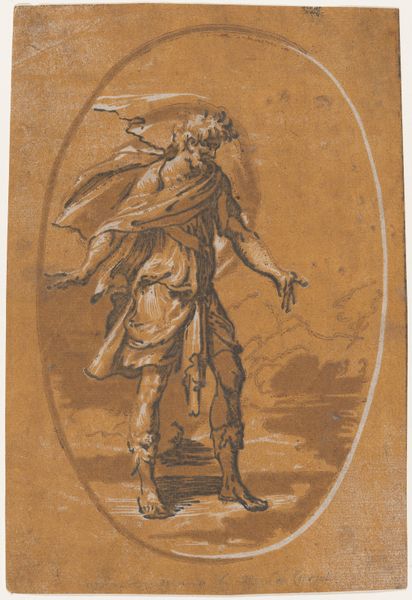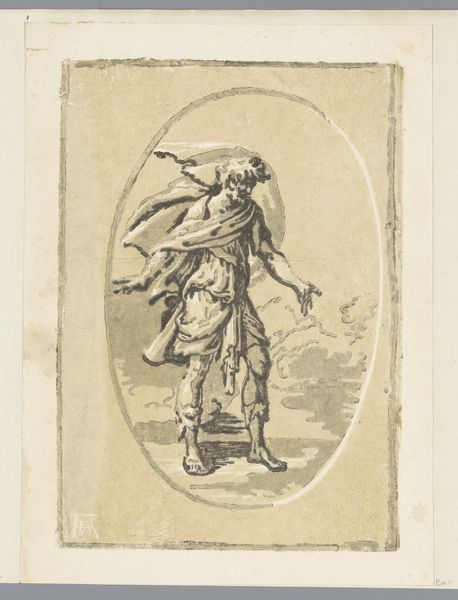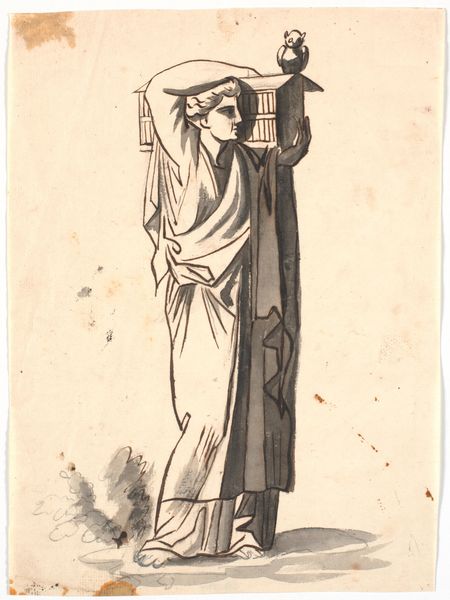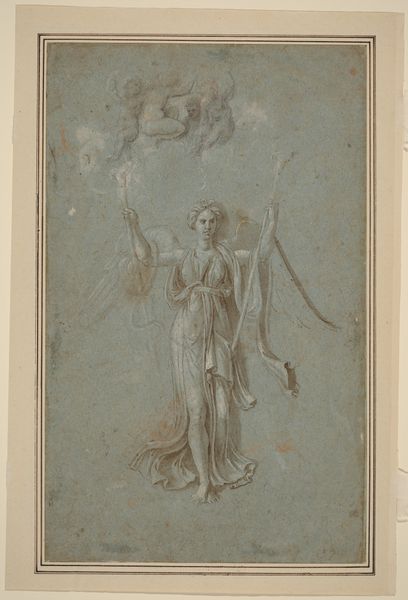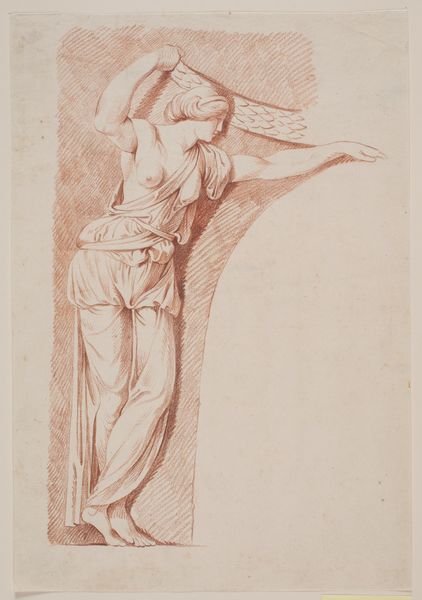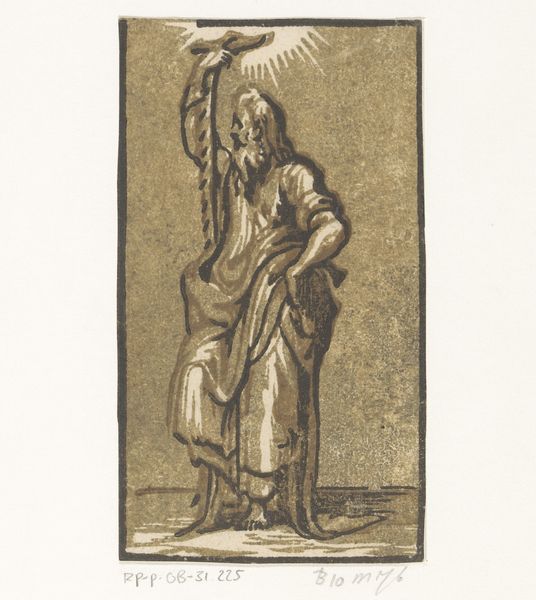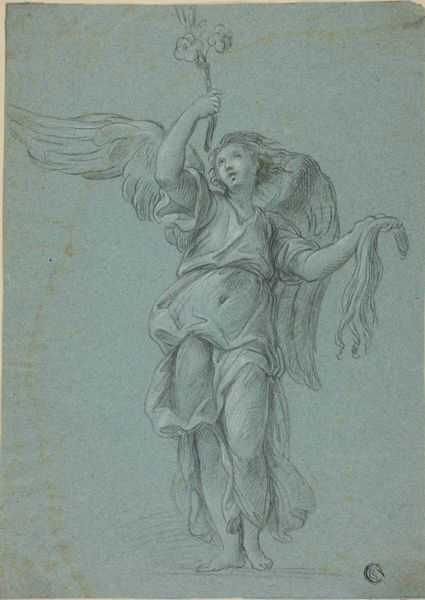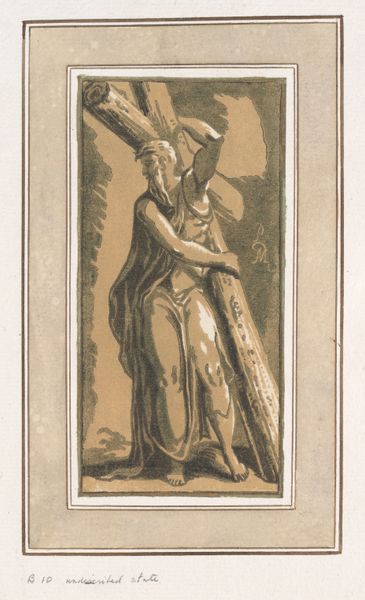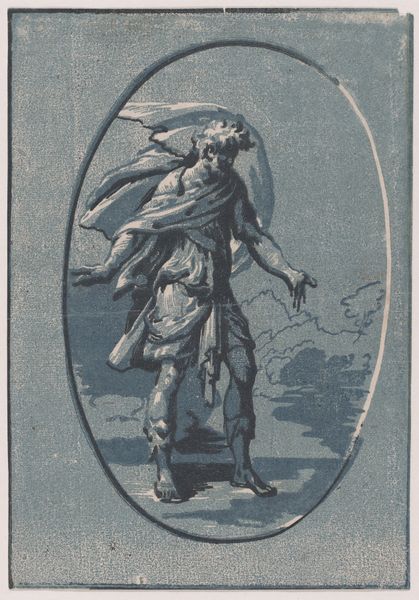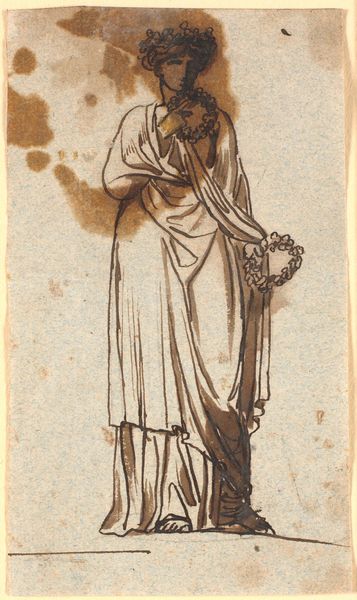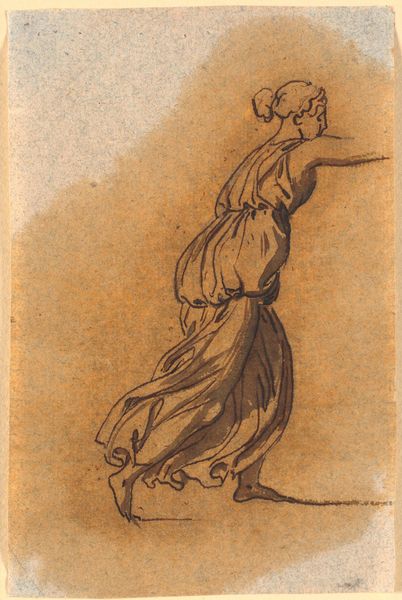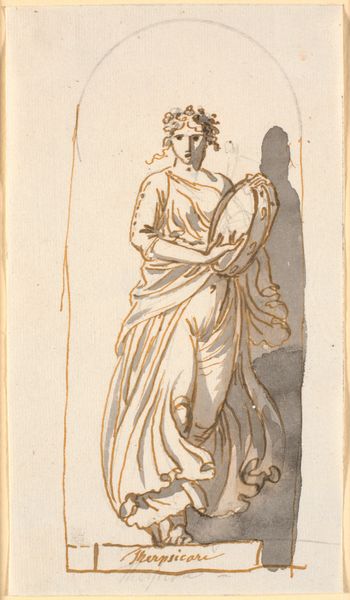
Dimensions: 129 mm (height) x 102 mm (width) (bladmaal)
Editor: So, we're looking at "A Winged Victory with a Laurel Wreath," by Nicolai Abildgaard, created sometime between 1743 and 1809. It's an ink drawing. There's a real sense of lightness and movement despite the classical subject matter. What's your take on this piece? Curator: The immediacy of the ink drawing highlights the labour involved. Abildgaard is actively creating, not just representing, an allegorical figure. Look at the visible strokes, the build-up of ink. This isn’t some divine creation; it’s an act of *making*. Editor: That's interesting. It also feels like it wasn't necessarily meant to be the *final* artwork but the material suggests an explorative method. How does that tie into your thinking? Curator: Precisely! Consider the context. Was this drawing made for a wealthy patron, destined for display? Or was it part of Abildgaard's own material investigation, a step towards a larger work, a testing of ideas? The intended destination significantly changes the value we assign to it. Furthermore, Baroque is the dominant style. Where does this put it within its cultural significance? Editor: Hmm, good point. The preparatory nature emphasizes process, rather than finished product. Curator: Exactly. This makes us consider where true value resides—in the perfectly polished artwork or the messy, hands-on engagement with materials. Are the consumption habits of wealthy patrons changing artistic process itself, and in doing so does that have cultural effects? Editor: I never really considered drawings in terms of the material making process. Thinking about art in that context is revealing. Curator: And understanding the materials, production, and social context often opens up deeper questions than just analyzing its form. What social strata are represented here, or completely absent from this drawing?
Comments
No comments
Be the first to comment and join the conversation on the ultimate creative platform.
